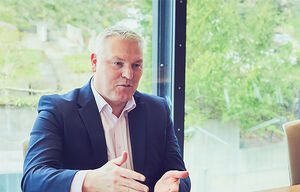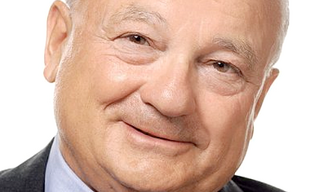How DBS CEO Tan Su Shan is Crafting a GenAI Powerhouse
Since becoming CEO in March, Tan Su Shan has led DBS into the next frontier: a gen-AI-enabled bank – with a heart. In an interview with McKinsey, she offers a window into how DBS is scaling AI in banking while staying grounded in purpose, navigating risk, and preserving human connection.
Reflecting on her leadership philosophy, Tan Su Shan emphasizes the need for emotional balance in extreme times. «When things are really good, don’t lose your head; when things are really bad, don’t lose your heart,» she says in an interview in McKinsey's «Leading Asia series», which features in-depth conversations with some of the region’s most value-creating leaders on what it takes to realize bold ambitions and take them further.
She believes in cultivating a diverse team with complementary skills – strategy, execution, operations, tech – and building trust so that the group can face volatility together.
Mastering Volatility
In turbulent times, Tan argues, success hinges on agility. The ability to pivot, adapt, and reconfigure quickly is essential. «AI is eating the world… staying ahead of these trends requires nimbleness, agility, and open-mindedness.»
She also invokes the concept of «ambidextrous leadership» – balancing the legacy infrastructure of banking with innovative new pursuits.
Rooted in Asia
DBS sees its home region – Asia – as the heart of its identity. Tan underscores the importance of focusing on core markets like China, India, and Indonesia while anchoring tech and financial hubs in Singapore and Hong Kong.
To manage geopolitical and regulatory complexity, DBS implements ring-fencing of capital, risks, and technology. It strives for interoperability when beneficial, yet stands ready to operate independently when needed.
Purpose as a Compass
DBS’s roots lie in nation-building: the «D» originally stood for Development Bank of Singapore. For Tan, that heritage still matters.
Today DBS invests heavily in social impact: over S$1 billion ($770 million) committed in a decade to lift low-income communities across its markets. «Our purpose is what defines us.»
She stresses collaboration – with governments, NGOs, and local communities—as essential to scaling impact.
From Data Lakes to Model Factories
DBS’s AI journey began years ago with the establishment of a data lake and progressive industrialization of analytics.
Through A/B testing and scaling, DBS built ~1,300–1,600 models. In 2024, AI and data initiatives generated ~S$750 million of economic value; for 2025 Tan anticipates S$1.1-1.2 billion.
But more than tech, she insists, the transformation must flow through culture. She wants DBS to be «a gen AI–enabled bank with a heart.»
Guardrails first: the PURE framework for responsible AI
Tan details her guiding philosophy for data: the PURE framework:
- Purposeful use of data
- Unsurprising (no customer surprises)
- Respectful in collection and communication
- Explainable (transparent logic)
Beyond philosophy, DBS enforces guardrails: human-in-the-loop oversight, access controls, bias checks, and accountability.
What’s Next: DBS GPT, Vertical AI, and Shared Candor
Tan says DBS is going all in on AI. Key to that is getting fundamentals right: clean data, robust guardrails, and a culture of learning.
They distinguish between horizontal AI capabilities (platform-level) and vertical use cases (industry- or task-specific). Some will succeed, some will fail—it’s part of the learning journey.
One favorite example: DBS GPT, a gen-AI assistant for employees—translating, drafting customer letters, supporting bank staff in understanding SME banking. The aim: democratize knowledge internally.
Blueprint for Human-Centred AI Banking
Tan Su Shan’s vision offers a powerful template: marry advanced AI with purpose, guardrails, and empathy. Her approach recognizes that technology alone is not transformation – it is shaped by values, leadership, and human touch.
In Tan’s words, DBS is not content to be merely «AI-enabled.» It wants to be «a gen-AI bank with a heart.» The question now: can other institutions follow suit?




























